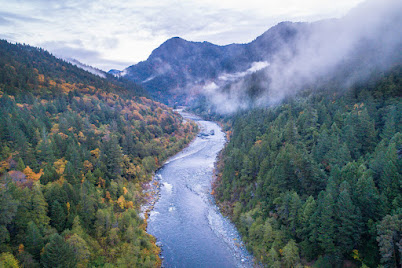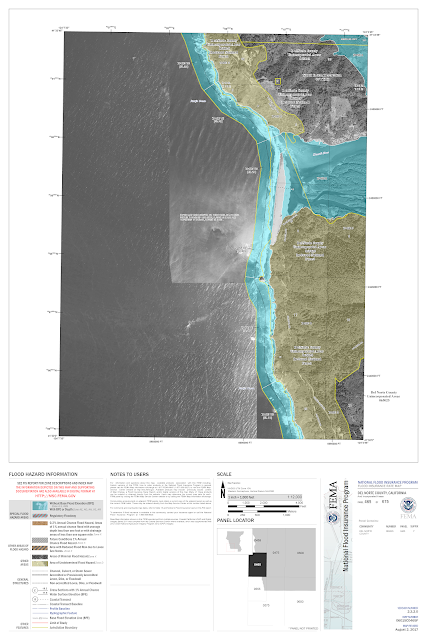The Klamath River: Decades of Conflict Transition to an Era of Rebirth
Studying the wicked problems of sustainability in the 21st century through the Virginia Tech Online Masters of Natural Resources is incredibly edifying and continues to shed light on many of the greatest challenges of our time. But one can find themselves feeling pretty powerless and occasionally hopeless in the face of natural disasters, droughts, poverty, and worldwide policy change that continues to move at a glacial pace. So I have decided to immerse myself in the story of the Klamath River, a narrative that seems, at the present moment, to show signs of hope.
The Upper Klamath River Basin was once known as “the Everglades of the West," its two enormous lakes boasting teeming wetlands, the path for 80% of the Western US’s migratory birds, and overflowing with fish, including the two species of sucker fish sacred to the Klamath Tribes, the c’waam and koptu. But 150 years of Indian removal and subjugation, the Homestead Acts post-World War I and II, and Federal reclamation of the basin at the turn of the 20th century opened the land for farmers and ranchers. 80% of the 185,000 acres of shallow lakes and wetlands have now been lost to human land use.
The Klamath Watershed begins in the Cascades of Oregon, one of the headwaters beginning near Crater Lake, and flows approximately 300 miles through Siskiyou County, California releasing into the ocean near Klamath, California. The Klamath River, the lakes, and beyond, were once the spawning ground for multiple species of salmon and steelhead, supposedly so dense one could lift them out of the water. Now they only make it into the lower and middle sections. It is one of the mighty rivers of the west, on par with the Columbia and the Sacramento, still boasting Wild and Scenic sections. The river has been sacred to tribes in the region since time immemorial, including the Yurok and Karuk. But a series of four dams built between the early 1900s and 1960s cut off fish passage and water quality has suffered substantially. The confluence of wetland removal, cattle and agricultural runoff, dams, drought, and increased temperatures has choked this once great river, and toxic blue-green algae appears every summer both in the reservoirs behind the dams and in the lower river itself, harmful to humans, domestic animals, and of course native fauna, especially the fish.
Added to the environmental challenges, social challenges have been a long-standing reality in this region. Though only approximately 125,000 people live along the river, its watershed could fit three eastern states, and its stakeholders’ European forebears have farmed, ranched, and fished this land for 200 years, infinitely longer for the tribes. The region has been rife with conflict for all that time over water rights and allocation. The farmers and ranchers in the upper reaches need a certain amount for their usage and the tribes on the lakes need a certain level and quality for their fish to survive. The tribes in the lower regions need a certain flow and quality for fostering salmon and steelhead reproduction. Historically, like many other water supplies in the American West, namely the Colorado River, the Klamath was woefully over-allocated, and that has only increased hostilities and tensions, often resulting in racist rhetoric and even violence.
A turning point came as the mega-drought affecting the West turned its wrath on the Klamath Basin. In 2001 there was not enough water for the farmers and ranchers, many businesses went belly up, and depression and suicide followed. The tribes down river received the regular flow, however, increasing tensions. The following year was just as bad, but the Federal Government swung the other way, ensuring the upstream stakeholders survived another year. This caused a mass fish kill down river, depressing and angering the tribal communities.
These twin disasters began a decade-long community-based negotiation with all stakeholders, resulting in historic agreements called the KBRA (Klamath Basin Restoration Agreement) and the KHSA (Klamath Hydroelectric Settlement Agreement). Compromises were made, and allocations and dam removal were written into the treaties. But the plan stalled in Congress and was ultimately shut down, essentially by a single, conservative California congressman in 2015. Ironically, though the KBRA died, the KHSA was renegotiated and dam removal and other restoration projects in the region are most likely moving forward.
But the healing of old wounds and common goals and needs of the different stakeholders have sadly been put on the back burner. Political divisiveness in the last 10 years and right-wing groups have only fueled the tensions and racism constantly beneath the surface, and continued drought in the region only fans the flames, both literally and metaphorically.
Shane Anderson, Swiftwater Films
Nevertheless, the dam removal and subsequent restoration has begun, despite this history of conflict and policy blockades. I intend to spend much of this semester documenting the restoration in real time, hopefully with field trips and interviews with some of the major players and workers on the front line.
Note: A good place to start if one is interested in this or any great rivers of our nation is the American Rivers website: https://www.americanrivers.org





Comments
Post a Comment